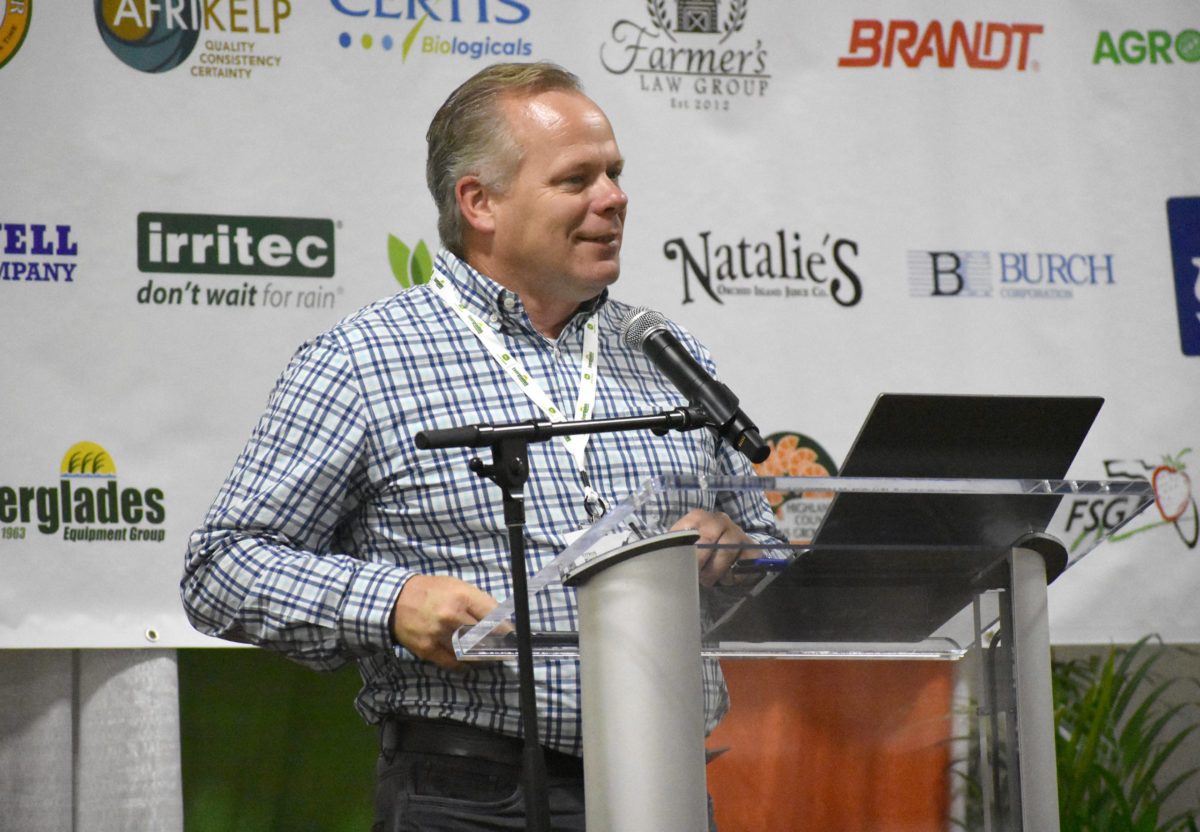By Clint Thompson
A plethora of topics were addressed during the vegetable and specialty crop seminar sessions at the Citrus and Specialty Crop Expo.
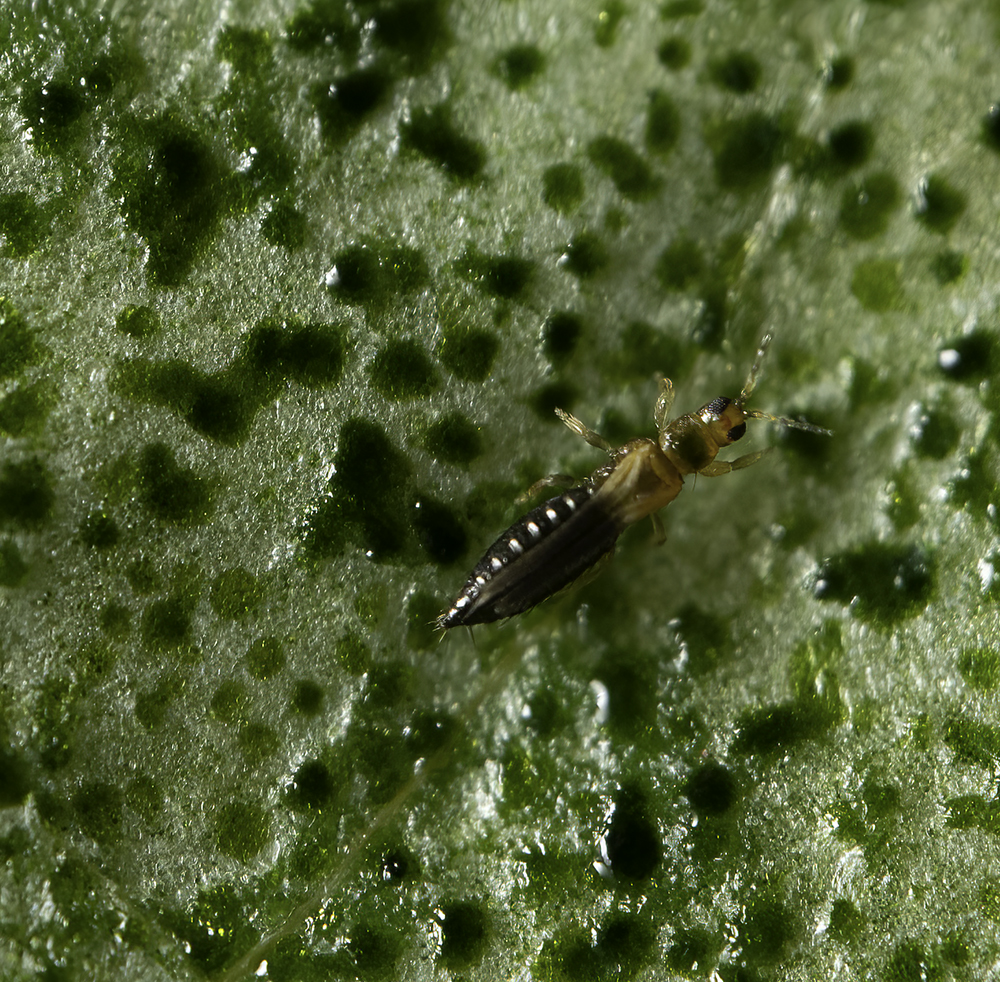
Photo by L.S. Osborne, UF/IFAS
SCOUTING ESSENTIAL Anna Mészáros, University of Florida Institute of Food and Agricultural Sciences (UF/IFAS) commercial vegetable Extension agent, kicked off the educational program by providing an update on Thrips parvispinus. She said scouting is a necessity for thrips control and encouraged vegetable farmers to scout diligently for T. parvispinus. Mészáros noted that the pest was most observed on cucumber, squash and zucchini for the first time last spring.
“The first time we saw this, it kind of caught us off guard. That’s why we have to identify the pest,” Mészáros said. “It’s obviously important to record identification, because the first symptoms really look like broad mites. If a grower keeps spraying something against broad mites, it won’t do anything for thrips. Again, scouting is going to be really important. We have to start applying insecticides as soon as we see the pest, especially on peppers, because this is where we saw the most damage.”
Thrips are not the only insect pests that require diligent scouting. Jawwad Qureshi, UF/IFAS associate professor of entomology, discussed the current factors that producers need to consider when managing pepper weevils. The management strategies start with scouting.
“It’s very important because once adults come in, it’s very difficult to stop them from starting the new generations,” advised Qureshi. “As long as we know early on that they’re coming in and we can target the spray applications, then we can significantly reduce the populations and the buildup of the populations in the crop. It’s easier to manage them when the populations are low.”
WHITEFLY MANAGEMENT
Hugh Smith, UF/IFAS associate professor of entomology and nematology, spoke on whitefly management in Florida vegetables. His research focuses on which insecticides are most effective, which ones work on adults and/or nymphs, and which ones are most vulnerable to resistance.
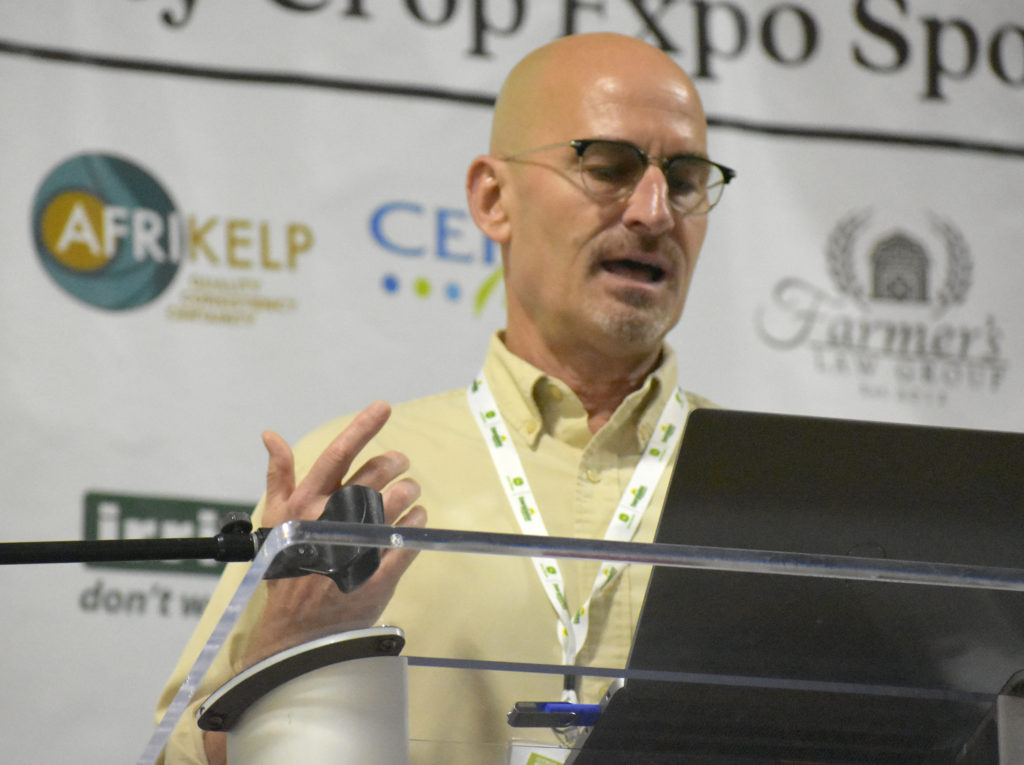
Photo by Clint Thompson
He stressed that insecticides play a “supporting role” when seasons are bad. Growers should also implement a sanitation strategy once they are finished harvesting their crop, eliminating any plants that could serve as potential hosts.
SOIL SAMPLING FOR NEMATODES
Johan Desaeger, UF/IFAS associate professor of entomology and nematology, gave a presentation on nematode management. He emphasized that growers should know when to conduct soil samples. An ill-timed soil sample can lead to producers becoming complacent with results that may not be a true representation of the presence of nematodes.
“The timing of when you take your sample makes a big difference. If you sample in a field that has no crop in it, it’s fallow, and you’re just going to sample the top soil, I can guarantee you’re not going to find a lot of plant parasitic nematodes. You may get this false sense of security that you don’t have nematode problems,” Desaeger explained. “Timing of sampling is critical. I suggest if you want to take soil samples, do it when you have a crop in the field; maybe the second half of the season when you have plenty of roots available.
“For root-knot nematodes, which is really the No. 1 concern, especially for vegetable growers, look at your roots. Dig up your roots at the end of your previous crop and if you don’t see any galls on them, you’re probably fine. That’s a telltale sign. If you see galls on your roots, then you know you’ve got nematodes.”
WEED MANAGEMENT
Ramdas Kanissery, weed scientist and assistant professor at UF/IFAS, talked about weed management during the fallow period. He believes what growers do during the time when a field is not in production will have just as big of an impact on weeds as what they do during the production season itself.
“As they say, prevention is better than a cure. In fallow, that’s the best time for us to intervene. Fallow is the time you’re going to see a lot of weed emergence. All of these weeds are going to make seeds and emerge as baby weeds in the next season,” Kanissery said. “If you have a good management practice — whether that’s chemical, cultural or mechanical — that’s going to help in the long run. That’s going to have a lot of impact on the upcoming season.”
Cover crop implementation remains a vital tool for growers to utilize. Not only do cover crops suppress weeds, but they also enrich the soil.
BLACK ROT DISEASE
Renzo Ramirez, a graduate research assistant in plant pathology at UF/IFAS, discussed the management of black rot disease in cabbage production. Products like Actigard, Howler, Regalia, ReyZox and Vacciplant provide consistent efficacy in reducing the disease’s severity. Yields improved in at least one research trial of Kocide 3000, Howler and Regalia. Microthiol provided unsatisfactory performance during UF/IFAS research.
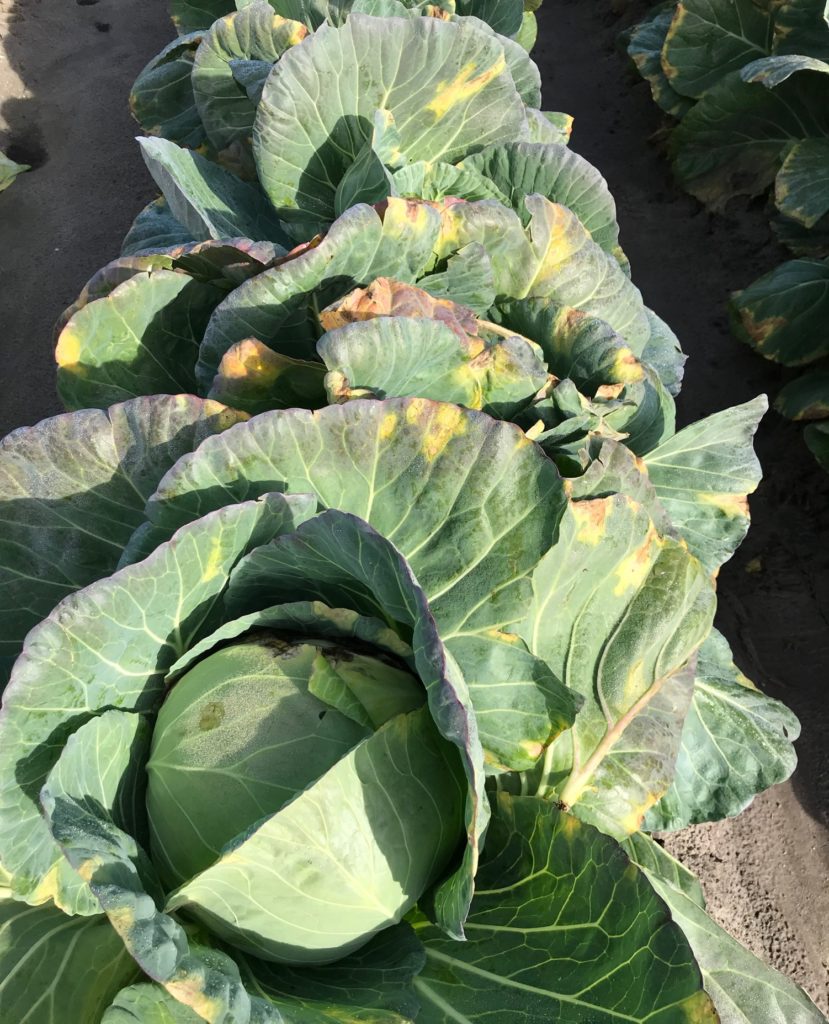
Photo by Wael Elwakil, UF/IFAS
SUSTAINABLE PRODUCTION
Pavlos Tsouvaltzis, assistant professor of vegetable horticulture at UF/IFAS, discussed various factors that will contribute to sustainable vegetable production in Florida. These include efficient use of resources like nutrients, pesticides, water, energy and labor.
CROPPING SYSTEMS
Nathan Boyd, UF/IFAS professor of horticulture and weed science, spoke on relay cropping and double cropping during his presentation. Relay cropping is the production process where one crop follows another, but the life cycles overlap each other. For example, once a grower begins harvesting their strawberry crop, they then plant a vegetable such as eggplant. A producer plants two crops in less time than one after another.
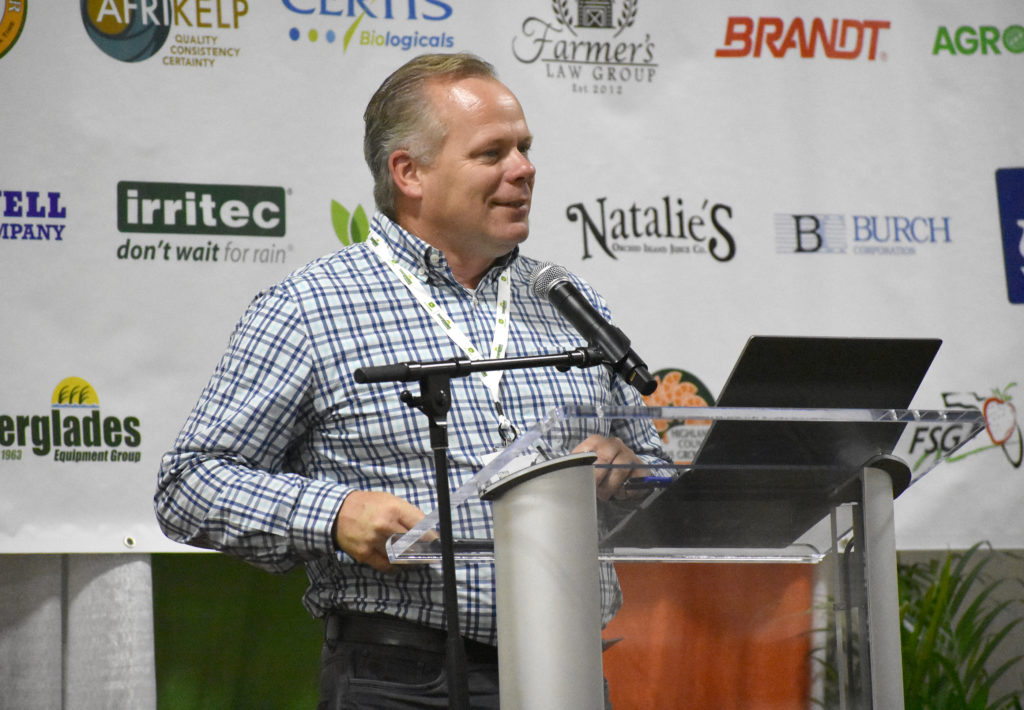
Photo by Clint Thompson
“A lot of growers are selling by contract, so they need a wide planting timeframe,” Boyd said. “If they want to plant into a bed of strawberries, the earliest plantings have to happen when the strawberries are still there. The other option is if you’re growing bell peppers and another vegetable, people aren’t going to drive through Georgia to come to Florida to get a crop. You’ve got to be able to time your markets so you can produce something before Georgia does. Often, you don’t have time to have one crop after another, so relay cropping allows you to squeeze them together.”
UPDATES on BMPs
Best management practices (BMPs) continue to be a hot topic for Florida growers. A team of UF/IFAS researchers, including Thomas Obreza, Sanjay Shukla, Shinsuke Agehara, Christian Christensen and Kimberly Morgan, provided updates on research into crops like beans, potatoes and tomatoes.
Fiscal year 2023–24 projects will continue to center on crops like tomatoes, potatoes, snap beans, citrus, corn and watermelon and focus on nitrogen, phosphorous and the 5Rs, specifically the right water. Research will continue in partnership with producers, and some studies will take place on UF/IFAS sites.
IFAS PROGRAMS DISCUSSED
Vivek Sharma, UF/IFAS assistant professor in precision water management, updated attendees about the Florida Stakeholder Engagement Program (STEP), which focuses on the optimization of agricultural water, nutrients and economic efficiency. STEP is an innovative Extension program that engages farmers, members of the ag industry, agricultural research professionals and Extension in an interactive real-world system.
The goal of STEP is to increase productivity, sustainability and profitability. The program’s objective is to host farm management competitions that encourage profitability and efficiency.
Rick Lusher, UF/IFAS Florida Automated Weather Network (FAWN) project manager, provided an overview of the system that allows growers to make management decisions based on real-time data generated from weather stations across the state. Visit fawn.ifas.ufl.edu to learn more.










